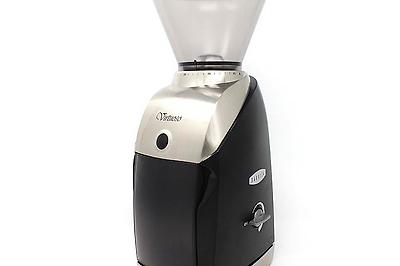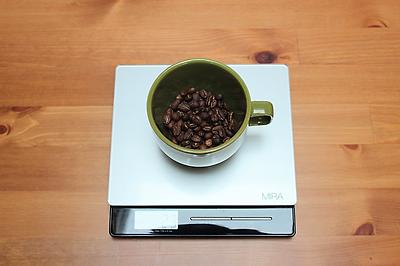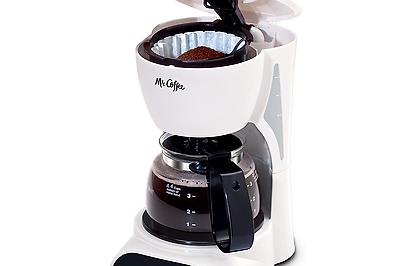How to make better coffee with a Drip Coffee Maker
We’ve all been there - you enjoy a great cup of coffee that’s vibrant and flavorful at your favorite cafe, but when you try to make coffee at work or at home it tastes flat and mediocre at best. Sure there are all different ways to brew delicious coffee manually like the AeroPress or a pour-over - but the cafe you were at uses a machine that’s essentially a bigger version of a regular drip coffee maker. So you should be able to get similar results out of your own drip machine, right?
We think drip coffee makers can do a pretty good job of brewing excellent coffee - which can make a world of difference in the break room. And it’s not just a game of chance, there are a few steps you can take to make sure that you’re getting the most out of your coffee maker!

Step 1. Use Fresh, High-Quality Coffee
The number one thing that will make your coffee taste better is... better coffee beans. If you want to step up the brews coming out of your coffee maker, you have to step up the beans going into it! This can be a bit more complicated than it sounds - since a lot of coffee roasters are saying that their magical roasting is the key to better tasting coffee. (Spoiler alert - it isn't). At MCC - we'll tell it to you straight: the beans are what matter. We focus on getting the best lots of premium coffee for the club, and featuring something new every week.

Step 2. Upgrade your grind
After having fresh coffee, the most important thing you can do is grind that coffee just before brewing it. Ground coffee starts to lose its flavor in about 15 minutes, so you want to grind your whole beans just before you go to make a pot of coffee.
This means having a grinder handy! Grinders come in all shapes, sizes, and prices - but if you can, you should try to get a burr grinder. They produce a more consistent grind wherein all the coffee grounds are the same size & shape (consistency helps your coffee maker brew evenly and produce a tasty cup). For drip coffee makers, you'll want to use a medium coarse grind. We recommend a few models here.
If you don't have access to a burr grinder, blade grinders are an option (although they're essentially just spice mills). Blade grinders don't produce coffee grounds anywhere near as consistent as burr grinders so we highly recommend a burr grinder for best results.
Step 3. Clean all the parts
This one seems like a no-brainer, but you’d be surprised how often Mr. Coffees don’t get all-the-way cleaned (especially if you’re using one that lives in a communal space like a break room). Make sure that the pot has been washed and dried, and check to see if the basket where you place the filter is removable. Take it out and give it a thorough wash - oftentimes this is the part of maintenance that gets skipped. Oils and residue from previous brews build up in this basket and can make your coffee taste super oily and burnt. You can even make a 50/50 vinegar & water solution and run it through your brewer to clean the internals - just make sure to do a few cycles of water afterwards to flush out any lingering vinegar. Make sure everything is clean and dry before you brew to get the best results.

Step 4. Get your ratio right
Depending on how much coffee you throw into the filter for your brew, you might be over or under-extracting your coffee, which can make it taste weak or bitter. To combat this, most coffee shops measure out their coffee by weight to make sure that they’re getting the right ratio - around 16:1 water to ground coffee is a good baseline.
If you have a kitchen scale, it’s easy to weigh how much water you’re pouring into the coffee maker and dose your coffee accordingly. If you don’t have a scale, one tablespoon of medium-ground coffee per 6 fluid ounces (~170g) of water is around what you’ll need. Most coffee makers consider a “cup” of coffee to be 6 fluid ounces, so if you’re filling up a “3-cup coffee maker” you should use three tablespoons of coffee, and so on.
Adjusting to taste is pretty simple: if the coffee tastes weak and watery, increase the coffee side of the ratio. If the coffee tastes bitter or too strong, increase the water side of the ratio.

Step 5. Pre-rinse your filter
Paper filters may have some residual particles from when they were made which can leave a papery taste in your brew. To combat this, place your filter in the basket and pour some hot water over it before you put your coffee grounds in the filter. This rinse will clear up any paper taste, just be sure to discard the rinse water that drains into your coffee pot before you start your real brew!
Step 6. Check for scaling
If you live in an area with hard water, you may see build-up of non-soluble mineral deposits that can affect your machine's function. Mineral build-up can clog some of the channels that dispense water over your coffee grounds, which can lead to uneven brews.
If you notice mineral build-up on your machine, you may be able to get replacement parts online from the manufacturer. (It's pretty hard to remove mineral build-up in a way that's food-safe.) To prevent mineral build-up in the first place, use filtered water in your coffee maker. This may improve the taste of your coffee even if you don't have mineral build-up issues!
Join our email list!
Wanna learn more about coffee, from sourcing to brewing? Sign up for our email list to hear about the coffees we're shipping and all the different ways to make them taste great!